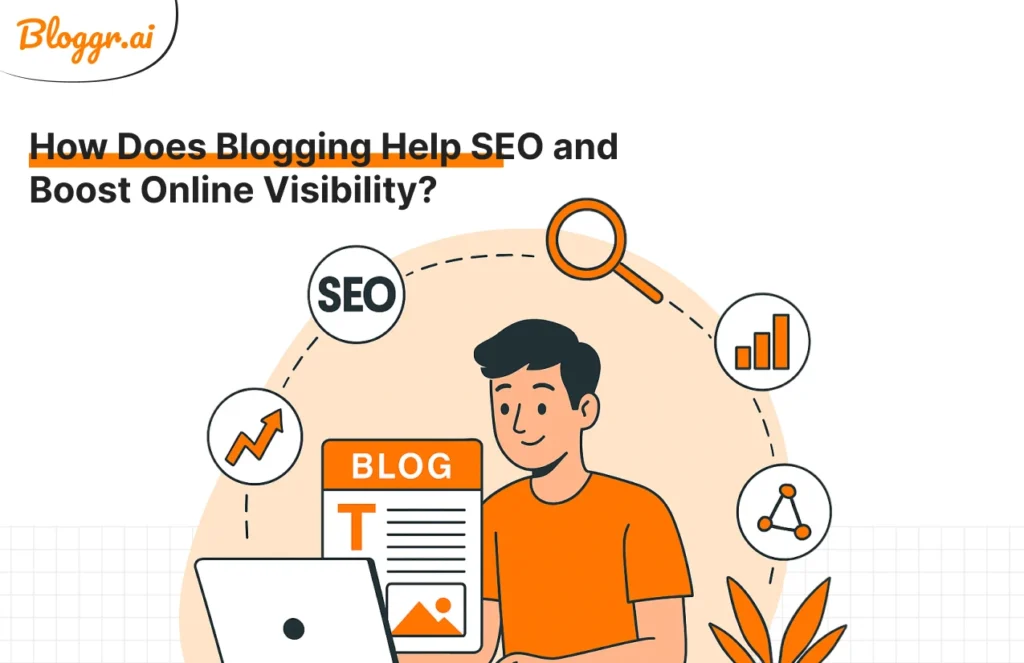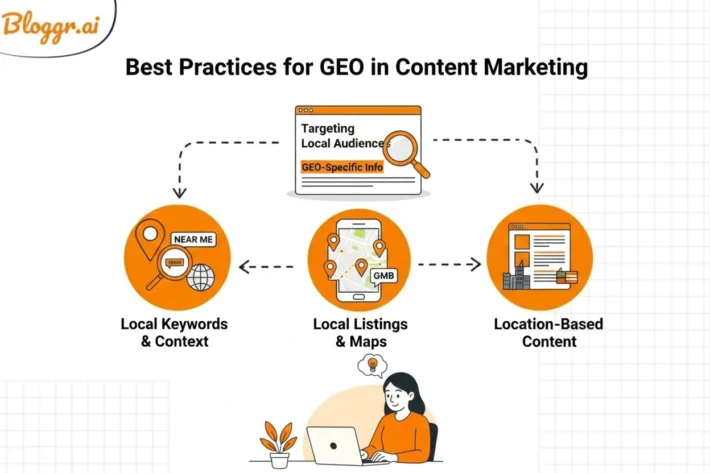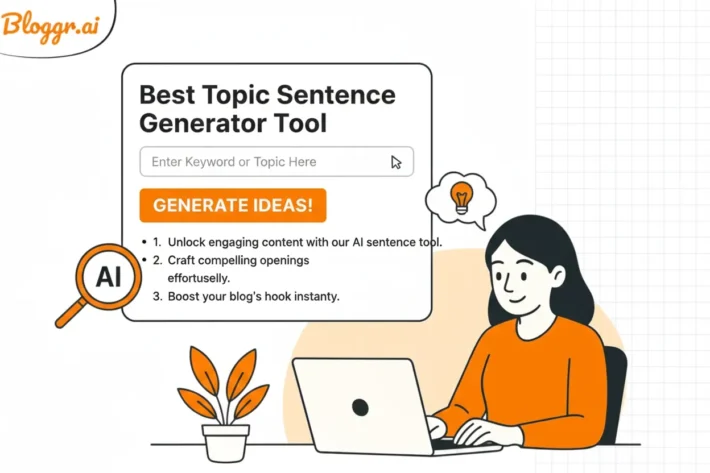How Does Blogging Help SEO and Boost Online Visibility?

TL;DR
- Blogging is a core SEO strategy for improving organic traffic, search visibility, and brand authority.
- SEO optimized blog involves keyword targeting, on-page optimization, internal linking, and user-focused content structure.
- Websites with blogs get 434% more indexed pages and 55% more traffic than those without.
- Consistent blogging boosts SEO by increasing crawl frequency, targeting long-tail keywords, and improving user engagement metrics.
- In 2025 and beyond, blogging remains an evergreen, cost-effective way to dominate online visibility and generate leads.
Introduction
Search engine algorithms are evolving rapidly, but one truth remains constant—content is still king. However, not just any content will suffice. In a digital landscape saturated with information, what truly stands out is high-quality, relevant, and well-optimized blog content that meets the needs of both users and search engines.
As content demands increase, many businesses turn to technology—such as a blog writer tool – to help maintain consistency and efficiency in their publishing efforts. Whether you’re a startup building visibility or an established brand enhancing search rankings, blogging continues to offer a scalable and effective way to strengthen your online presence.
This article explores how blogging supports SEO and why it remains a vital component of digital strategy in 2025, especially with the evolving role of AI in content creation.
What is SEO for a blog?
SEO for blog refers to the practice of optimizing blog content so that it ranks higher in search engine results pages (SERPs). This includes:
- Keyword Optimization: Using relevant, high-intent keywords that your audience is searching for.
- On-Page SEO: Crafting title tags, meta descriptions, alt text, and headings with precision.
- Internal Linking: Connecting blog content to relevant services or landing pages.
- Content Structure: Using headings, lists, and formatting to improve readability and scannability.
- User Intent: Writing content that answers real questions and solves real problems.
A strategic blogging approach ensures that your site gets crawled frequently, is seen as a resource hub, and gains trust from both users and search engines.
Want to Know?
Best AI Tools for Writing SEO-Rich Blog Content
Why Blogging Should Be a Core SEO Strategy (Only Statistics)
Content is the fuel that drives organic growth—and blogging is one of the most effective tools in the SEO arsenal. Below are powerful, data-driven statistics that prove why blogging should be central to your SEO strategy.
1. Websites with Blogs Have 434% More Indexed Pages
According to TechClient, websites that consistently publish blog content have 434% more indexed pages. More indexed pages mean more opportunities to rank in search engine results, helping you attract greater visibility and traffic.
2. Companies That Blog Get 55% More Website Visitors
HubSpot reveals that businesses with active blogs generate 55% more visitors than those without. Fresh, valuable content gives users a reason to return and explore more, increasing site engagement and time on site.
3. Blogging Increases Lead Generation by 67%
A Demand Metric study found that companies that blog produce 67% more leads monthly than those that don’t. By targeting relevant keywords and answering customer questions, blog posts become lead magnets through search traffic.
4. Blog Content Boosts Ranking Chances by 97%
BrightEdge reports that adding optimized blog content can increase the likelihood of ranking in search engines by up to 97%, especially when paired with a targeted keyword strategy and internal linking.
5. Refreshing Old Blog Posts Can Boost Traffic by 106%
HubSpot also found that updating old blog posts with new data, improved structure, and updated keywords can more than double traffic—by up to 106%. This proves the long-term value of consistent content upkeep.
6. Marketers Who Prioritize Blogging Are 13x More Likely to See ROI
Companies that consistently blog are 13 times more likely to see a positive return on investment, as per HubSpot’s State of Inbound report. SEO-optimized blogs continue to generate results long after publishing.
7. Blogging Drives 97% More Inbound Links
Inbound links are one of Google’s top ranking signals. Moz confirms that blogging can drive up to 97% more inbound links, boosting a site’s domain authority and organic search performance.
8. Organic Search Drives 53.3% of All Website Traffic
Organic search accounts for more than half of all web traffic (53.3%), according to BrightEdge. Regular blogging helps websites capitalize on this traffic source by providing valuable content that ranks.
9. Long-Form Blog Posts Get 77.2% More Backlinks
According to Backlinko, long-form content (2,000+ words) earns significantly more backlinks—77.2% more on average—than shorter posts. More backlinks signal authority and help boost Google rankings.
10. Consistent Blogging Leads to 3.5x More Traffic
Sites that publish blogs on a regular schedule (weekly or bi-weekly) see 3.5 times more traffic than those that publish sporadically, as reported by Marketing Insider Group. Frequency and consistency build trust with both users and search engines.
Want to start writing a blog?
Don’t Start a Blog Without These 5 Key Tips
How SEO Works in Blogging?
The mechanics of SEO in blogging are built on one foundational principle: relevance + authority + freshness = visibility — a formula that lies at the heart of SEO best practices for blog creation.
Here’s how it works:
- Blogging Expands Keyword Coverage: Each post allows you to target new keyword opportunities that your product or landing pages can’t cover.
- Search Engines Crawl Blogs More Often: New content signals that your site is active, leading to more frequent indexing.
- Improved Site Architecture: Internal linking in blogs creates a robust structure that helps search engines understand your content hierarchy.
- Enhanced User Signals: Blogs that engage readers improve dwell time and lower bounce rates—factors that influence rankings.
- Natural Link Building: Valuable blogs get shared and referenced, generating organic backlinks that boost domain authority.
Want to Know?
8 Must-Have AI SEO Tools
7 Ways Blogging Helps Improve SEO and Online Visibility
Blogging plays a crucial role in enhancing a website’s authority and boosting its online visibility. Here are 7 impactful ways it contributes to your digital growth:
1. Keeps Your Website Fresh and Active
Search engines favor websites that are regularly updated. Consistent blogging sends signals to Google that your site is active and relevant. Fresh content helps improve crawl frequency and search engine indexing, ultimately improving rankings.
2. Targets Long-Tail Keywords
Blogs are the perfect space to target long-tail keywords—more specific and lower-competition search queries. These keywords bring in highly targeted traffic and allow you to rank for terms that your main website pages may not address.
3. Builds Internal Linking Opportunities
Blogging provides natural opportunities to create internal links to other pages on your site. This strengthens your site’s architecture, improves crawlability for search bots, and distributes page authority across your domain.
4. Increases Time on Site (User Engagement)
Informative and engaging blog posts encourage visitors to stay longer on your website. A longer dwell time can be interpreted by search engines as a signal of content quality, helping improve your SEO rankings.
5. Generates Backlinks from Other Websites
High-quality blog content often earns backlinks—links from other websites referring to your blog. These backlinks are one of Google’s top ranking factors and contribute to domain authority and higher SERP positions.
6. Boosts Social Sharing and Referral Traffic
Well-crafted blogs are shareable on social media and across platforms, expanding your reach and driving referral traffic to your website. Increased visibility from social platforms also contributes indirectly to improved SEO.
7. Establishes Topical Authority and Brand Trust
Publishing in-depth, niche-relevant blog posts helps you build authority in your industry. When search engines and users recognize your site as a reliable source, your content is more likely to appear at the top of search results.
How to Optimize Your Blog for Search Engines
Optimizing your blog for search engines—commonly known as blog SEO (Search Engine Optimization)—is essential to drive organic traffic, improve visibility, and rank higher in search engine results pages (SERPs).
Here’s a breakdown of the most important steps to effectively optimize your blog:
1. Perform Keyword Research
Before writing any post, identify the right keywords that your target audience is actively searching for. Use tools like Google Keyword Planner, Ahrefs, or Ubersuggest to find high-volume, low-competition keywords relevant to your topic. Focus on primary keywords, but don’t neglect long-tail keywords, which often bring in highly targeted traffic.
2. Craft SEO-Friendly Blog Titles
Your blog title should be clear, engaging, and include your target keyword. An optimized title not only grabs attention but also signals to search engines what your content is about. Aim for 50–60 characters to ensure the full title appears in SERPs.
3. Structure Content with Proper Headings
Use proper HTML heading tags (<h1>, <h2>, <h3>, etc.) to organize your content. This hierarchy makes it easier for both readers and search engine crawlers to understand the structure and flow of your post. Include relevant keywords in subheadings where appropriate.
4. Optimize Meta Descriptions
Though not a direct ranking factor, a compelling meta description improves your click-through rate (CTR). Keep it under 160 characters and include your focus keyword to encourage users to visit your page.
5. Use Internal and External Links
Link to other relevant blog posts or pages on your website (internal linking) to improve site structure and user experience. Also, link to authoritative external sources to back up claims and build trust with search engines.
6. Optimize Images with Alt Text
Images not only enhance user experience but can also drive traffic from image search. Use descriptive alt text that includes relevant keywords to improve accessibility and SEO.
7. Improve Page Speed
A slow-loading blog can hurt your rankings and increase bounce rates. Compress images, enable browser caching, and minimize JavaScript to ensure faster page loads. Use tools like Google PageSpeed Insights to identify speed issues.
8. Make Your Blog Mobile-Friendly
With mobile devices accounting for more than half of web traffic, your blog must be responsive and mobile-optimized. Google uses mobile-first indexing, meaning it primarily uses the mobile version of your content for ranking.
9. Create High-Quality, Original Content
Search engines prioritize content that offers value, depth, and relevance. Following core principles to write posts that rank involves avoiding duplicate content, addressing specific user queries, and delivering original insights that meet search intent.
10. Encourage Engagement
Add clear calls-to-action (CTAs), allow comments, and enable social sharing to boost engagement metrics like time on page, bounce rate, and social signals—all of which influence SEO.
Conclusion
Blogging is no longer just a marketing tactic—it’s a strategic growth lever. When implemented thoughtfully, it becomes your 24/7 SEO engine—attracting visitors, building trust, and increasing conversions. In 2025 and beyond, brands that invest in meaningful, optimized blog content will dominate not only search rankings but also customer trust.
So if you’re serious about growing your online visibility, ranking higher on Google, and becoming a thought leader in your industry – start using the AI blog writer tool and blogging smarter today.


